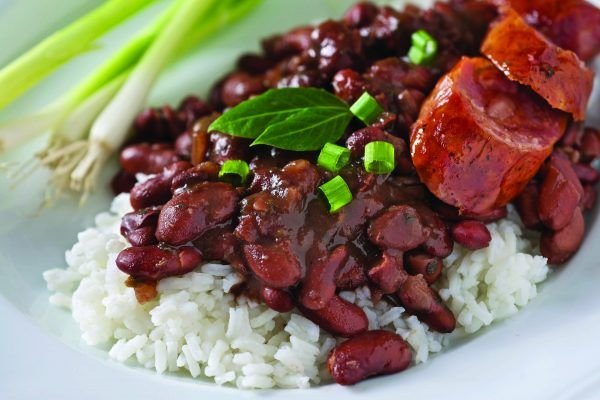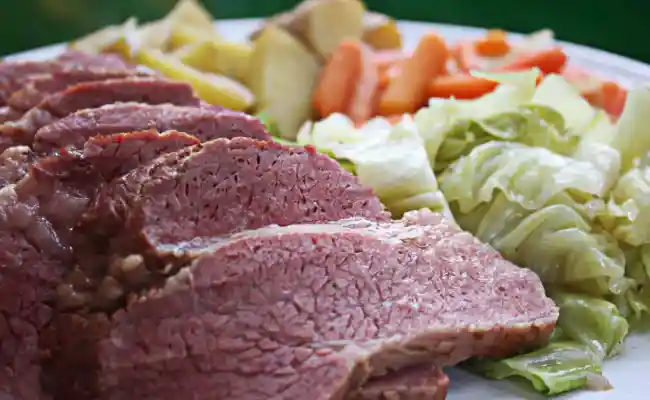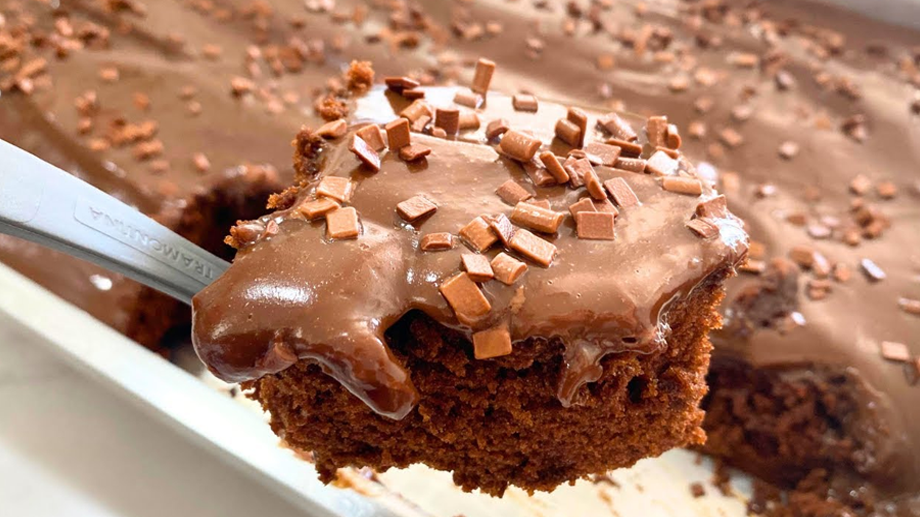Follow our complete, step-by-step, instructions to make this super delicious Pig Picking Cake recipe. One of the Souths favorite desserts is much easier to make than you might expect. Perfect for that next pig picking you’re having, or anytime you want a fantastic dessert.

Pig Picking Cake recipe.
Some folks call it Pig Picking and some folks call it Pig Pickin’, no matter what you call it… you have to call it absolutely “delicious.” I love me some Pig Picking Cake.
Here in the South, we often get together for Pig Pickings. We cook a whole hog on a pit, or a pig cooker type grill, at really low temperatures for a really long time. Then, we either just go up and pull pieces of the cooked meat to place on our plates, or someone will chop up a bunch of the cooked pork, add some sauce, and make great barbecue. We love a good pig picking.
As if that weren’t enough, we have to add some really good desserts to complete the meal.
Let me introduce you to the perfect cake if there ever was one for such an occasion… we call it a Pig Picking Cake, just to avoid any confusion.
Show up at about any such pig picking, church homecoming or get together, and you’ll likely find one of these pig picking cakes. Only a few select style of country type grocery stores carry them ready made.
The batter contains mandarin oranges which add a little tartness to the layers. The frosting is made from cool whip type whipped topping and crushed pineapple. The combination makes for a mouth watering dessert for any special event or family time get together.
While I like to make cakes from scratch, we follow the recipes used by most, and make this one using a boxed cake mix. You’ll find all the ingredients listed below.
If you’ve never tried one, I do hope you’ll consider making one for your self. I don’t think you’ll be disappointed one single bit.
Its even better if you serve it with some pulled pork of your own making as well. I’ve got a recipe for making some right here on Taste of Southern.
Ready to give it a try? Alright then, gather up the ingredients and head to the kitchen. Let’s Get Cooking!
Pig Pickin’ Cake: You’ll need these ingredients.
Prepare your cake pans.
I’m using 2 – 9 inch cake pans to make this cake. You can either grease and flour your pans, or use parchment paper in the bottom like I’ve done here. Just cut a couple of circles to fit the inside of your pan, lightly spray the bottom of the pan, then press the parchment paper down into the pan.
Grab a large mixing bowl and add the box of cake mix.
Drain the juice from the mandarin orange segments, but be sure to save the juice.
Add the mandarin orange slices to the cake mix. Just dump them in there whole. We’ll break them up once we start mixing the batter a few steps later.
Crack the eggs.
I always suggest that you crack the eggs in a separate bowl before adding them to any cake batter. That way, if you happen to get a piece of egg shell, you can easily see it and remove it.
Add the eggs to the mixing bowl.
Add the vegetable oil.
Add the vanilla extract.
Use an electric mixer and mix all the ingredients together until the batter is smooth. You’ll have small pieces of mandarin orange, but the batter itself should be fairly smooth in texture.
Use a large spoon or measuring cup to evenly divide the batter between the two cake pans.
Here’s a trick you may or may not have heard about.
I heard about this but had never tried it until I made this cake. I didn’t grease and flour or spray the inside edges of my pan. You can, if you wish… just saying that I didn’t.
The trick is suppose to be that you tilt the cake pan and let the batter come up a little over halfway up the inside of the pan. Roll it around until you’ve rolled it all around the inside of the pan.
This is similar to the way we put flour in a greased pan and roll the flour around to coat the inside edges of the cake pan.
This is “suppose” to keep the layer from forming such a high dome in the center of the layer as it bakes.
You don’t have to do this, but we’ll see what happens once the layers are baked. Stay tuned.
Hopefully you can see it here. You’ll have a thin coat of the batter up the edges of the pan all the way around. This is suppose to help the layer rise more around the outer edges than just in the center of the layer.
Place the pans on the center rack in your oven that has been preheated to 325F degrees.
Bake the layers for about 20 to 25 minutes or until they test done using the old toothpick test.
To test your cakes for doneness, insert a wooden toothpick into the center of the layer. Push it in deep and if it pulls out clean… your cake should be done. If it pulls out with some crumbs sticking to the toothpick, you need to let it bake for a few minutes longer.
When your layers are done, remove the pans from the oven and set them on a wire rack to cool.
Some folks say you can tell a layer is done when it pulls away from inside of the pan.
Mine hadn’t pulled away, but I’m sure it was because I had rolled the batter around the edges. Not to worry, it shouldn’t be a problem.
I do not remove my layers from the pans. Instead, I just let them sit on the wire racks until they are completely cooled.
Just to be safe though, I always like to run a thin knife around the inside of the pan between the layer and the pan itself. This way, your layer will not stick to the inside of the pan when you remove the layer.
Flip the pan over on the wire rack and gently lift the pan so the layer falls out.
Slowly peel the parchment paper away from the bottom of the layer.
As you can see, the bottom of the layer is fairly browned. I think my oven was a little hot despite the fact that I had the temperature set correctly. This is where you need to use an oven thermometer to test the temp inside your oven. Smile. I’ll have to listen to myself next time.
The circles on the top of the layer are from the wire rack I had it resting on. They make the layer look like it has more of a dome than it actually had. I think rolling the batter around in the pan before baking might be a good trick to remember.
Prepare the Frosting:
Your cool whip should have had time to thaw in your refrigerator. The brand I was using said to remove it from the freezer and let it thaw in the refrigerator for six hours before using. Keep that in mind when you go to prepare your frosting. You don’t want it to be frozen when you go to start making the frosting for our cake.
Empty the container or containers of cool whip into a large mixing bowl.
Add the “drained” pineapple.
The recipe I was using did not call for draining the pineapple first, but I highly recommend that you do. I’ve listed it as drained in the printable recipe below.
I just emptied the whole can, juice and all, into the cool whip, but it made my frosting a bit runny.
Save the juice because you can add it later if you need it.
Add the instant vanilla pudding.
MIX TOGETHER WITH A WOODEN SPOON.
You’ll have to forgive me, but for some totally strange an unknown reason, I failed to snap a photo of me mixing these ingredients together. Seriously, I do apologize for that, it’s the first mistake I’ve made all day long.
Just grab a large spoon and stir everything together until it’s fully combined. You can add a little of that drained pineapple juice if you think it needs it. Much easier to add it because once it’s mixed in you’ll not be able to remove it. Smile.
I did think the frosting was a bit thin with all the liquid so as I’ve mentioned, I’ve added the step to drain the pineapple to the printable recipe below. You can thank me later… okay?
This step is totally optional.
I measured the remaining juice from the mandarin oranges I had drained, then I placed it in a small sauce pot.
Then, I added an equal amount of sugar to the sauce pot.
I placed this on a burner on my stove and heated it just enough to dissolve the sugar as I stirred it. It only took a minute or two. Once it was dissolved, I placed this “simple syrup” mixture in a squeeze bottle and placed it in the freezer to cool it down for a few minutes.
Simple Syrup is normally made with equal parts water and sugar, but I used the mandarin orange juice instead of water. I’ll spread this liquid on my layers when I start assembling the cake to make the layers even more moist.
Assemble your cake:
You’ll need a plate or a cake board to assemble your cake on. I’ve also got a turntable to help when I start adding the frosting.
Place a dab of frosting in the center of your cake board or plate. Spread it out a bit.
This will help hold the cake layer in place when we add it next.
Here’s another tip for you when you go to decorate your cakes.
I hope you can see this, but I took three small strips of aluminum foil and placed them around the edges of my cake board – leaving the center with the frosting exposed – so I can keep my cake board clean while adding the frosting. You could use wax paper or parchment paper, whichever you have handy.
Center the first layer on the plate or cake board. Place the top side down for the first layer.
Press a little in the middle to stick the layer down to the frosting on the plate.
I think the layer looks darker in the photo than it actually was. It wasn’t burned by any means so I saw no need to trim the caramelization away.
If you make the simple syrup, spread a layer of syrup over the top of this first layer.
Spread a good thick layer of frosting over the top of the layer.
I decided to trim away the slight dome from the remaining layer. You don’t have to, it’s totally up to you.
Most folks will turn the top layer “bottom side up” so you have a flat surface to work on should you decide not to trim the dome away.
Either way, center the second layer over the first, then spread the layer with the simple syrup.
Spread another goodly amount of frosting on the top layer. You have a lot of frosting with this recipe, so you can make it a nice thick layer of frosting in the middle and on top.
Spread it out with a spatula or knife, working it all the way to the edge all the way around.
Spread the remaining frosting around the side of the cake.
It was a bit warm in the house while I was frosting this cake. The temperature outside had finally dropped low enough for me to turn the heat on for the first time this season. I had to keep working with it to get it all around the outside edge.
Gently and carefully pull the aluminum foil out from under the bottom layer. See how clean it leaves the edge of your board or plate. Well worth the effort, don’t you think?
If you can, refrigerate this cake for at least a day or two before you slice it. It just helps develop the flavors I think.
Enjoy!




